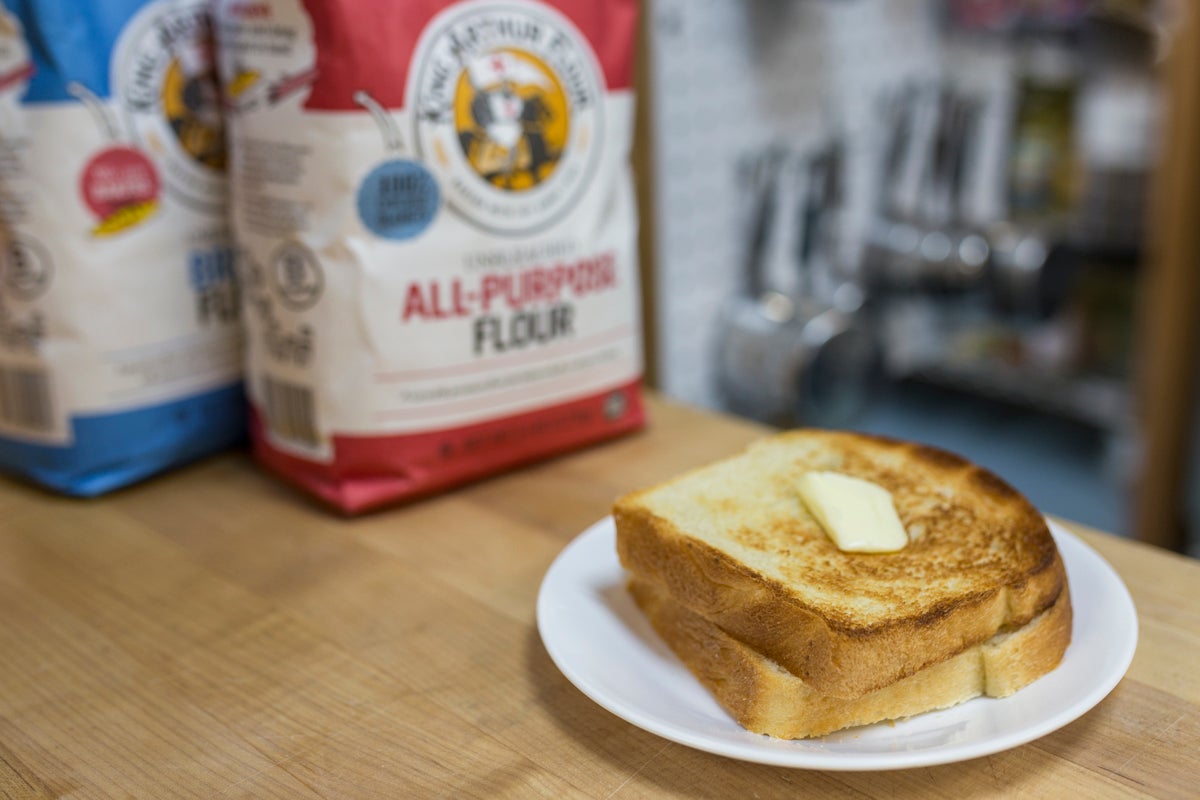

- Bread crumb substitute all purpose flour full#
- Bread crumb substitute all purpose flour professional#
Bread crumb substitute all purpose flour professional#
A baker will have developed their recipes based on the characteristics of the desired bread, and they will have chosen the correct flour for this application.Īll-purpose flour can also make great bread - many professional bakers use and love it in their loaves. You may be wondering, “If bread flour is so great, should I be swapping it in for all bread recipes that call for all-purpose?” The answer is: Keep it simple and use the exact flour called for in a recipe. While developing Pan de Cristal, Martin Philip determined that bread flour had “enough strength to hold tons of water and support a long final proof without collapsing.” When to bake bread with bread flour, and when to use all-purpose If you use a lower protein flour like all-purpose with the same amount of water, the dough will be too wet, sticky, and loose, and it will be more difficult to handle and shape it may also be gummy when baked. For instance, the beautiful open crumb of Pan de Cristal requires high hydration, which in turn needs bread flour to create strength in such a wet dough. Since the proteins in bread flour absorb more water, bread flour is also a great choice for recipes that call for a lot of liquid. If you make a bread dough with all-purpose flour, the gluten network won’t be as strong because of the lower protein content this means the dough won’t be able to stretch as much to accommodate those bubbles, resulting in smaller bubbles and bread with a tighter crumb. Gluten is both stretchy and strong - what bakers call “extensible” and “elastic.” This combination allows bread dough to capture and contain the carbon dioxide bubbles produced by yeast as their numbers grow, the dough gets bigger. The more gluten there is in the dough, the more it can stretch to accommodate the gas bubbles. The gas bubbles become trapped in the gluten and starch web, leavening the dough and making it big and fluffy. In bread, this means the starches in the grain are consumed by the yeast and bacteria and broken down into sugars, acids, and, crucially, gases. To get the airy, open texture of a loaf of bread, you’ll need to leaven the dough to get those bubbles - either with commercial yeast or sourdough culture.įermentation is the breakdown of organic substances into smaller parts by microbial processes.


Once the dough is formed, you have a solid ball of gluten and starch with no bubbles in it. When you add water to wheat flour, a strong, stretchy substance called gluten begins to form. Wheat flour contains two proteins called glutenin and gliadin. Let’s back up to what happens when you make bread. Why bread flour can make a difference in your bread (Though not always! Read about why whole wheat flour is one exception in this guide to gluten.) More gluten means stronger, stretchier dough, which is critical for a tall, airy loaf of bread.īread flour’s protein content (12.7%) is printed directly on the front of every King Arthur bag.

The protein in flour is what forms gluten in your dough, so higher protein means more gluten. Those may seem like small differences, but they have a big effect on how the flour behaves. For context, pastry and cake flours have less, about 8% to 10%, respectively. Bread flour has more protein (King Arthur’s is 12.7%) than all-purpose (11.7%). The primary difference between bread flour and all-purpose flour is the protein content. What’s the difference between bread flour and all-purpose flour?
Bread crumb substitute all purpose flour full#
But there’s a full bag of all-purpose flour right there - will it make a difference if you use all-purpose in a recipe that calls for bread flour? Only to realize your bag has just a sad scoop at the bottom. You’ve got the water, yeast, and salt your recipe calls for.


 0 kommentar(er)
0 kommentar(er)
